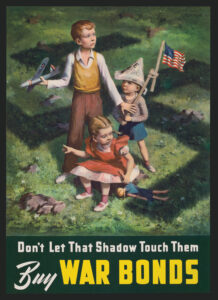North Carolina Governor Zebulon Vance not have realized it immediately, but the letter he might received from Margaret Smith in February 1863 was a report from another front in the war.
Speaking not just for herself but for the rest of the “Sufering Soldiers’ Famileys in Wayn County,” Smith told the governor in no uncertain terms that he had to do more for the poor soldiers’ wives of his state. “Without help,” she told him bluntly, “we must starve.” In case he didn’t know their circumstances, Smith gave Vance a poignant account of what the war had meant for women like her. “We hav seen the time when we could call our Little children and our Husbun to our tables and hav a plenty,” she told him, “and now we have Becom Beggars and starvers an now way to help ourselves.”
But Smith did more than just plead; she turned on the governor, accusing him of failing to live up to his promises to protect the vulnerable soldiers’ wives of North Carolina. “You our govner has promust the soldiers that thare famileys shod sher of the last,” she reminded him, quoting almost verbatim from his recent public proclamation, “and wee think it is hie time for us to get help in time of our need.” Like so many other women who had never, as one put it, “wrote to a man of authority before,” Margaret Smith mustered a basic but valuable literacy to call in the government’s debt to the soldiers on behalf, as she carefully put it, of “ourselves all Soldiers wives the righters as Sign thare name.”
Margaret Smith’s letter and the many more like it that Vance and other governors received in 1863 represented a Southern yeomanry devastated by conscription and war. It was a field report from a home front stripped of men. It was a plea for help. But it was also a demand for justice for the Confederate poor. And in all of these ways it announced the arrival of soldiers’ wives—poor white rural Southern women—as a significant force in Confederate political life.
By mid-March 1863, when the Confederacy was wracked by a wave of food riots, Southern governors would have good reason to recall the warnings that had landed in their letter bags. They could hardly say they hadn’t been warned. Confederate governors and the secretary of war received hundreds, even thousands, of such letters, some a good deal more threatening than Smith’s. Pushed into a new and undesired relationship with government officials because of the intrusive conscription and tax policies of the Confederate government, poor white women forged a new collective political identity and used it to step into history—to make themselves count in Southern political life.
Soldiers’ wives were legion in the Confederacy by 1863, as much a product of the draft as their soldier husbands. When all was said and done the Confederate armies enlisted a staggering 75 to 85 percent of the white military-age population. “The iron has gone deep into the heart of society,” the chief of the Confederate Bureau of War memorably put it. What did a home front look like with 85 percent of the men gone? The South was an agrarian society, whole regions of it populated by yeoman and poor white families. There had never been any expectation that women could subsist on those farms without the labor of men.
With husbands and sons in the war, the food crisis in the Confederacy reached starvation proportions. By the time Margaret Smith wrote Vance, internal correspondence in the Confederate War Department openly acknowledged the extent of the crisis. “How can our Soldiers’ fight when they know their wives and children are destitute even of a peace of bread,” one panicked county clerk wrote Vance in January 1863. It was in this context that Smith and other poor white women began to mobilize, insisting that government officials keep the promises they made when taking the men for war. This “politics of subsistence” and the soldiers’ wives who created it were an entirely unanticipated element of the Confederate war.
The women proved increasingly willing to fight their own battles. It is true that many just wrote petitions, the classic “begging letters” of the politically weak. But soldiers’ wives’ petitions could be threatening—and, as it turned out, not all of their threats were idle. Numbers of women warned their governors that if they didn’t take provisions from the “big men” and give it to the poor, the “woman will have to do it.”
“They will raise a crowd and take something to eat,” one warned.
Six weeks before the food riots in Salisbury, N.C., an anonymous letter landed on Governor Vance’s desk. It was from a “company” of women in Bladen County who called themselves “Regulators,” after the North Carolina farmers who had mounted armed attacks on British officials in the Revolution to protest high taxes and other class issues. They would have corn at $2 a bushel, they told the governor, or they would seize it: “The time has come that we the common people has to hav bread or blood and we are bound boath men and women to hav it or die in the attempt.” That cry for bread or blood would ricochet through the Confederacy before six weeks was out. As Margaret Smith and the other soldiers’ wives made clear, any government that took their men would have to answer to them.
Stephanie McCurry is a professor of history at the University of Pennsylvania and author of the award-winning Confederate Reckoning: Power and Politics in the Civil War South.
Originally published in the January 2013 issue of America’s Civil War. To subscribe, click here.




